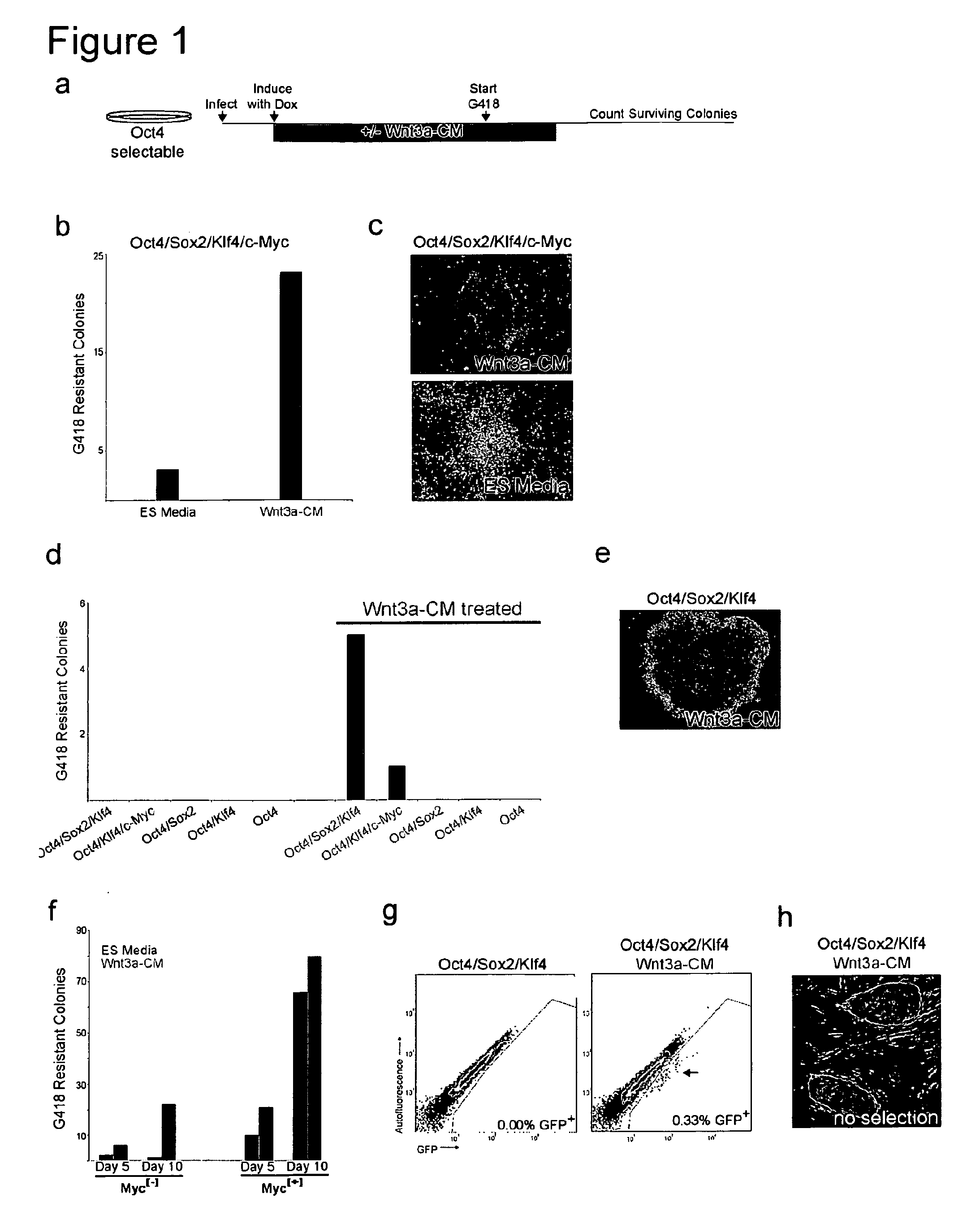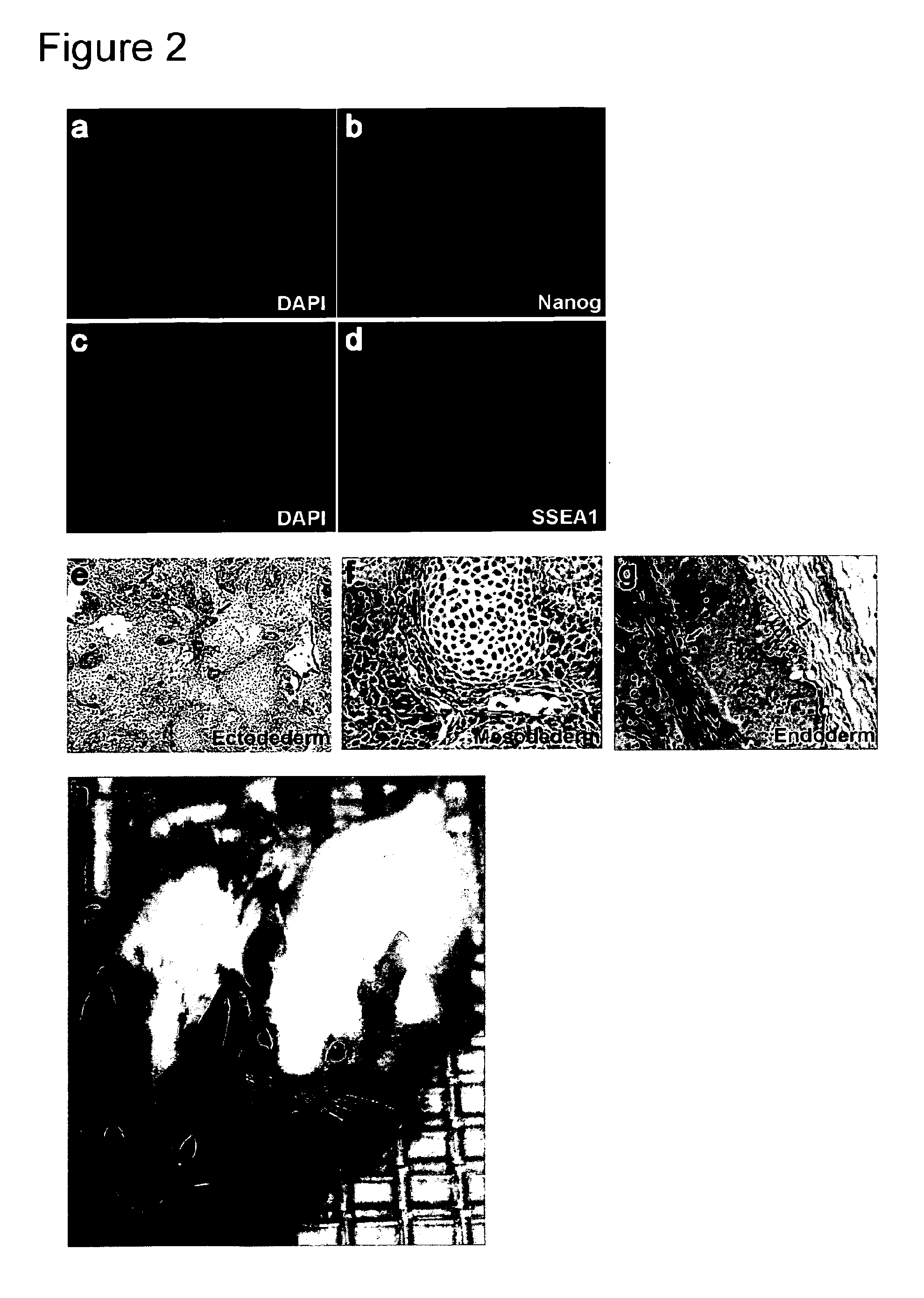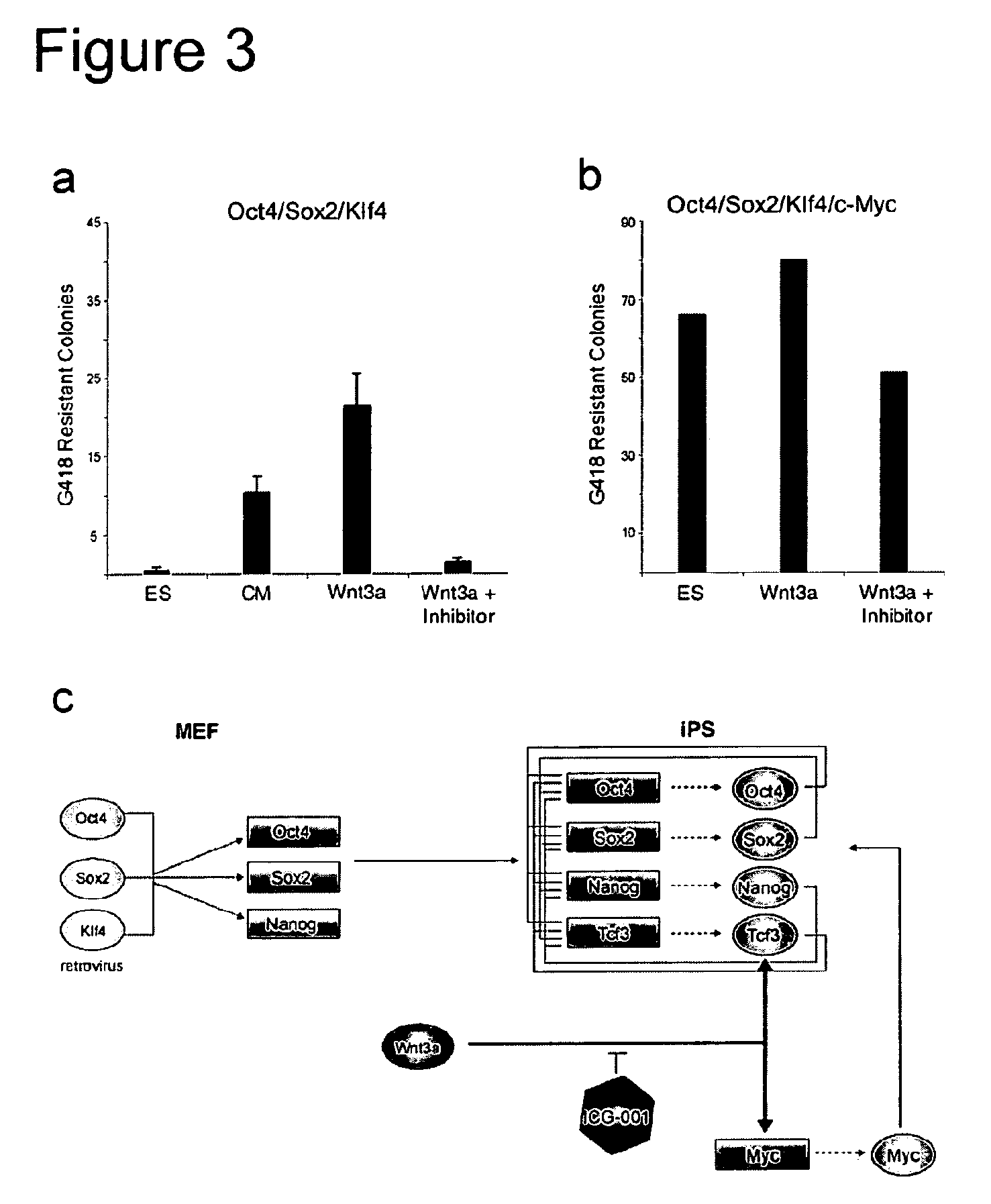WNT pathway stimulation in reprogramming somatic cells with nuclear reprogramming factors
a technology of nuclear reprogramming factors and reprogramming somatic cells, which is applied in the direction of genetically modified cells, immunological disorders, extracellular fluid disorders, etc., can solve the problems of difficulty in generating es cells that are genetically matched to individual patients, several limitations of traditional es cell isolation methods applied to generating human es cells, etc., to increase the speed or efficiency of reprogramming cells, the effect of increasing the speed or efficiency of reprogramm
- Summary
- Abstract
- Description
- Claims
- Application Information
AI Technical Summary
Benefits of technology
Problems solved by technology
Method used
Image
Examples
example 1
Generation of ES-Like Cells Using Wnt3a Conditioned Media
[0177]We hypothesized that stimulation of the stimulation of the Wnt pathway using soluble factors could modulate the efficiency of inducing pluripotency in somatic cells. This Example describes initial experiments undertaken to determine the effect of Wnt pathway stimulation on reprogramming. Cells containing an Oct4-IRES-eGFP or Oct4-IRES-neo construct were infected with lentiviral vectors encoding either three or four factors as described above. Expression of the pluripotency factors was induced on day 2. In some experiments, cells were cultured in Wnt3a conditioned media or unconditioned media as shown in FIG. 4A (top) from days 2-13. GFP expression was analyzed by FACS on day 13 and 20. In other experiments, cells were cultured in Wnt3a conditioned media or unconditioned media as shown in FIG. 4A (bottom) from days 2-13 or 2-20. G418 selection was imposed on day 7 or 13. Surviving colonies were counted on day 20.
[0178]Res...
example 2
Further Experiments Relating to Generation of ES-Like Cells Using Wnt3a Conditioned Media
[0191]To further define the effect of Wnt3a on reprogramming, we infected MEFs that harbor a doxycyline (DOX)-inducible Oct4 cDNA (Hochedlinger, 2005) with DOX-inducible lentiviral vectors encoding Sox2, Klf4, and c-Myc (Brambrink, et al., 2008). These cells also contained a G418 resistance cassette in the endogenous Oct4 locus allowing for drug selection of iPS cells (Meissner et al., 2007).
[0192]Four-factor expression was induced by addition of DOX in cells cultured in the presence or absence of Wnt3a conditioned medium (Wnt3a-CM), G418 selection was initiated after 5 days and the number of drug resistant colonies was determined 24 days after induction (FIG. 1a). FIG. 1b shows that the total number of drug resistant colonies was increased more that 7 fold when the cells were cultured in Wnt3a-CM. We also noted that the drug resistant colonies were larger and more ES-cell like by morphology whe...
example 3
Generation of Myc[−] iPS Clones without Genetic Selection
[0195]Recently, iPS cells have been generated without c-Myc retrovirus (Myc[−]), but in the absence of exogenous c-Myc the efficiency and kinetics of reprogramming are significantly reduced (Nakagawa et al., 2008; Wernig et al., 2008). We tested whether Wnt3a-CM would also aid in the generation of iPS cells in the absence of selection for Oct4 reactivation. For this, cells with GFP driven by the endogenous Oct4 promoter were utilized (Meissner, et al., 2008). Oct4 / Sox2 / Klf4 infected cells with and without Wnt3a-CM treatment were analyzed for GFP expression by flow cytometry at days 10, 15 and 20 after DOX induction. No GFP positive cells were present with or without Wnt3a-CM treatment on day 10 or day 15. By day 20 a small population of GFP expressing cells was detected in cells cultured in Wnt3a-CM but not in standard ES cell medium (FIG. 1g). The Wnt3a-CM exposed cultures formed GFP expressing colonies with morphology typica...
PUM
| Property | Measurement | Unit |
|---|---|---|
| time | aaaaa | aaaaa |
| temperature | aaaaa | aaaaa |
| molecular weight | aaaaa | aaaaa |
Abstract
Description
Claims
Application Information
 Login to View More
Login to View More - R&D
- Intellectual Property
- Life Sciences
- Materials
- Tech Scout
- Unparalleled Data Quality
- Higher Quality Content
- 60% Fewer Hallucinations
Browse by: Latest US Patents, China's latest patents, Technical Efficacy Thesaurus, Application Domain, Technology Topic, Popular Technical Reports.
© 2025 PatSnap. All rights reserved.Legal|Privacy policy|Modern Slavery Act Transparency Statement|Sitemap|About US| Contact US: help@patsnap.com



